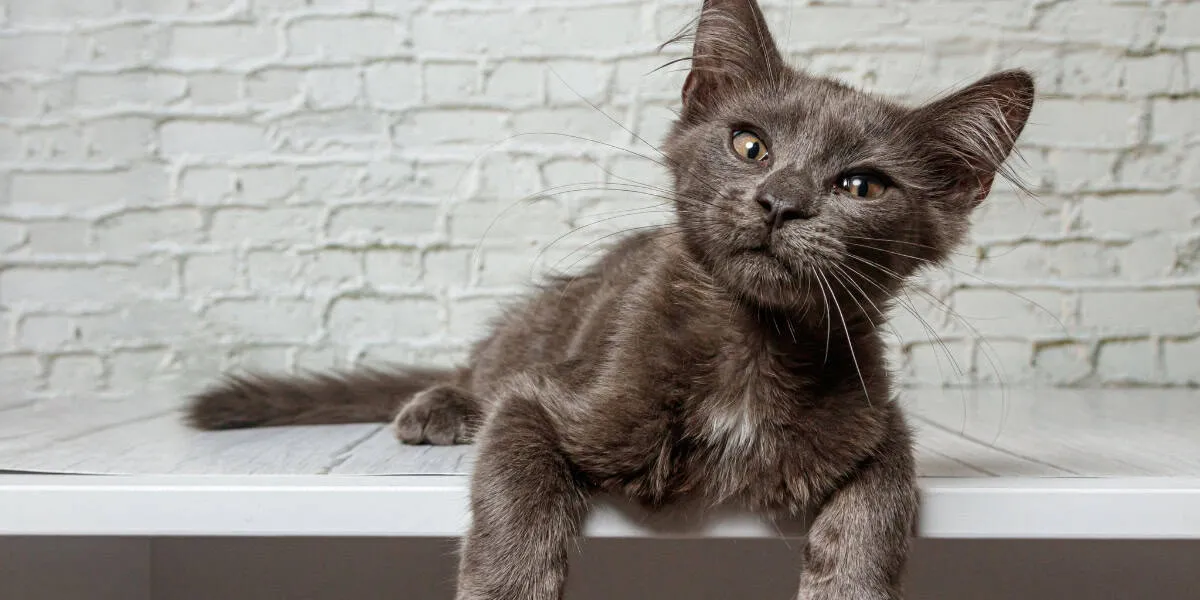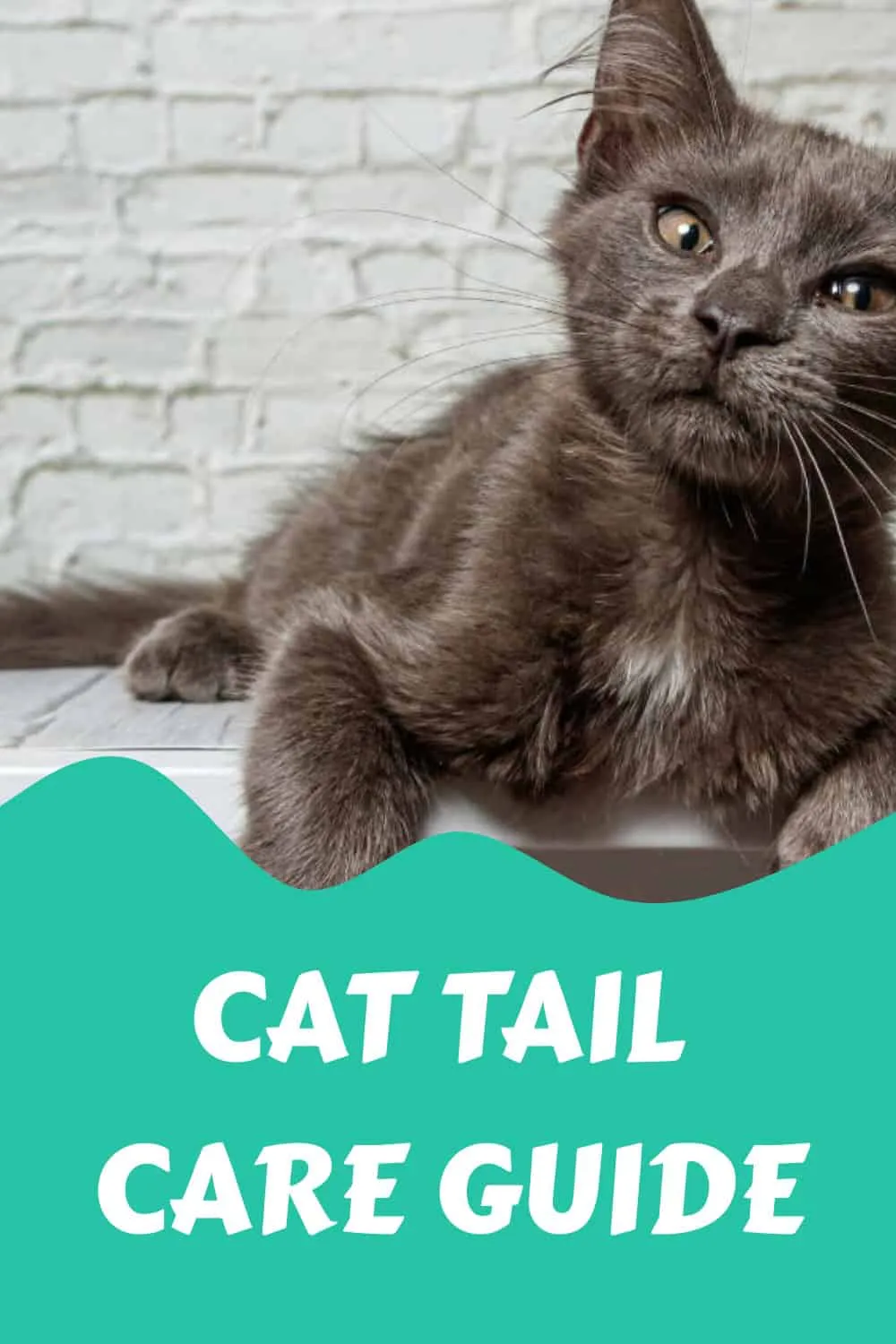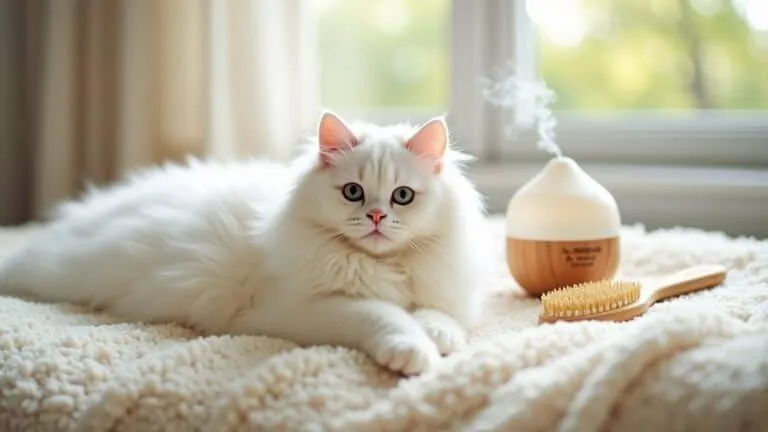The Best Fluffy Pancakes recipe you will fall in love with. Full of tips and tricks to help you make the best pancakes.

So you want to take good care of your cat tail plant?
First things first, it needs sunlight. Make sure it gets at least 6-8 hours of direct sunlight daily. This will prevent the stems from becoming weak.
Next, you'll want to plant it in loamy, organic-rich soil. The soil should have standing water, and you should keep it consistently moist during active growth.
Regular pruning is also important for healthy growth. Don't worry too much about fertilization, though – it's only necessary occasionally.
One thing to keep in mind is that cat tails can be toxic to children and pets, so be cautious.
By following these guidelines, you'll create an ideal environment for your cat tail to thrive. You'll soon discover the many benefits these resilient plants have to offer.
Lighting Requirements for Optimal Growth
To keep your Cat Tails Euphorbia happy and healthy, it needs to be in a spot that gets a lot of bright, direct sunlight. Ideally, it should be less than a foot away from a south-facing window. This is crucial because cattail plants need full sun to grow well.
In fact, your plant needs at least 6-8 hours of direct sunlight every day to stay robust and prevent weak, leggy stems. If it doesn't get enough light, the leaves will start to turn yellow or brown, which is a sign of stress that can slow down its growth. You should also keep an eye on the local weather, as cloudy days can reduce the amount of light your plant gets. Adjust its position accordingly to make sure it's getting enough light.
If your Cat Tails Euphorbia doesn't get enough light, it will struggle to grow and will be more prone to disease. On the other hand, if you give it the right amount of light, it will thrive and bring joy and beauty to your space.
Watering and Soil Care Essentials
When it comes to caring for your cat tail, getting watering and soil care right is crucial. You want to find that sweet spot where the soil is consistently moist during active growth, but not so much that you end up with water stagnation, which can lead to root rot.
Watering Frequency Essentials
When it comes to watering your cattail, maintaining a consistent moisture level is crucial, especially during the active growth phase. You want to make sure your plant receives the right amount of water to prevent drought stress.
So, what's the key to getting it right?
First, avoid water stagnation at all costs. You need to make sure your soil drains well to prevent water from collecting around the roots, which can lead to root rot.
Seasonal changes also play a role in how often you should water. During the winter, allow the soil to nearly dry out to accommodate the plant's dormant phase and avoid overwatering.
Soil Moisture Monitoring
To keep your cat tail plant healthy, you need to develop a routine to check the soil moisture level regularly. This is crucial to ensure the soil remains well-drained and dry between waterings, preventing root rot that can occur with overwatering.
As a cat tail plant owner, you need to monitor soil moisture closely because it's essential for maintaining the best root health. The frequency of watering may vary depending on the environmental humidity and temperature. So, you should aim to check the soil moisture level regularly.
It's also important to avoid excessive moisture, especially during winter months when the plant is dormant. You can use a water calculator to get personalized watering recommendations tailored to your plant's specific environment and needs.
To create an ideal environment for your cat tail plant, keep the soil nearly dry during winter and maintain warm and moist conditions during active growth. Regular checks on soil moisture levels will help you identify any issues early on and prevent common problems associated with improper watering practices.
Fertilization and Nutrient Management
Cattails are adapted to thrive in environments rich in nutrients, which means they don't need a lot of fertilizer to do well. In fact, most potting soils provide enough nutrients, and simply replacing the soil regularly is usually enough to keep your plant healthy.
If you do decide to fertilize, just keep in mind that you don't want to overdo it. Too much fertilizer can actually harm your cattail's growth and the environment. Instead, opt for a balanced fertilizer that's been diluted to half the recommended strength. This will provide your plant with the nutrients it needs without overloading it.
It's also a good idea to repot your cattail every two years or when it's doubled in size. This will give the roots access to fresh nutrients and prevent the soil from becoming depleted.
Toxicity and Safety Precautions
As you bring a Cat Tails Euphorbia plant into your home or garden, it's essential to acknowledge the potential risks associated with its toxicity, particularly for curious children and pets.
The plant's toxicity isn't well-documented, but that's all the more reason to be cautious. It's crucial to exercise caution and take safety precautions to avoid any potential harm.
When it comes to potential risks, there are a few things to consider. If someone ingests the plant, whether it's a human or a pet, it's vital to monitor them closely and contact Poison Control or a veterinarian immediately if you suspect ingestion.
It's also important to educate yourself on the potential risks associated with the Cat Tails Euphorbia plant. Since there's a lack of thorough studies on its toxicity, it's better to err on the side of caution. Confirm that you've chosen a secure location for the plant, and make sure it's out of reach of children and pets.
Supervise interactions with the plant, and avoid ingesting any part of it. If you or someone else experiences unforeseen symptoms, seek medical assistance right away. It's always better to prioritize safety over uncertainty.
Troubleshooting Common Issues
Troubleshooting Common Issues
When caring for your Cat Tails Euphorbia, you might run into some common problems. But if you stay on top of things and catch issues early, you can keep your plant thriving.
One of the main things to keep an eye on is light exposure. If your plant's leaves are turning yellow or brown, it might be getting too much or too little light. Try moving it to a spot with bright sunlight, but not direct sunlight, which can be too intense.
Soil moisture is another key area to focus on. If the soil is too dry, your plant can dehydrate. On the other hand, if it's too wet, you risk root rot. Make sure the soil drains well and isn't waterlogged.
Environmental conditions, like temperature and humidity, can also affect your plant's health. Try to keep it in a stable environment and avoid extreme changes.
Planting and Establishment Strategies
To get cattails to grow well, you need to think about when and how to plant them, as well as the kind of soil they'll thrive in.
By getting these things right, you'll give your plants the best chance to grow strong and healthy.
Let's take a closer look at each of these important factors that can make all the difference.
Ideal Planting Conditions
Ideal Planting Conditions
Cattails thrive in loamy, very moist soil – ideally with standing water up to 12 inches deep – that's rich in organic matter. This kind of environment gives them the perfect conditions to grow and flourish.
When it comes to planting, timing is important. You've got a few options, but here's what works best:
Plant your cattails in early fall, and they'll have a head start on establishing themselves before winter sets in. Alternatively, you can plant in spring and early summer to take advantage of the favorable growing conditions. If you time it just right, you can also plant during heavy rainfall – this helps keep the soil consistently moist, which can really boost their chances of success.
Remember to space your plants 1-3 feet apart, so they've got room to grow and don't get overcrowded. By following these guidelines, you'll be creating a thriving environment for your cattails.
Optimal Soil Selection
So, you want to grow cattails? First things first, you'll need to pick a soil that's similar to their natural habitat.
That means it should be rich in organic matter and able to hold onto moisture. This will give your cattails the best chance to grow strong and healthy.
Ideally, you want a loamy soil that's super moist and packed with organic matter. This type of soil will support the plant's growth and development, giving you a strong root system and healthy foliage.
When choosing a spot to plant, make sure it's got shallow water or consistently moist soil. This will make it easy for your cattails to establish themselves.
Also, be careful about the soil composition. You don't want to introduce any non-native species that could mess with the ecosystem.
Plant your cattails about 1-3 feet apart so they've got room to breathe and grow. Keep an eye on the soil moisture levels, especially after heavy rain.
You want to make sure the soil is just right for your cattails to thrive.
Early Fall Planting
As the weather starts to cool down and summer's warmth begins to fade, early fall is a great time to plant cattails. This timing helps them develop a strong foundation before winter arrives, which is crucial for their survival.
When you decide to plant, remember that the soil you choose is important. Go for loamy soil that's super moist and can handle up to 12 inches of standing water. It's also key to have high organic matter in the soil. This will give your cattails the perfect conditions to thrive.
You'll also want to make sure to space your cattails correctly. Plant them 1-3 feet apart to promote healthy growth and prevent overcrowding, which can lead to disease and pest issues.
Growth and Care Requirements
When it comes to growth and care, cattails have specific requirements that need to be met for ideal health and development. For peak growth and health, they need full sun – ideally 6-8 hours of direct sunlight daily.
The type of soil cattails thrive in is loamy and moist, with high organic matter content. They can even tolerate standing water up to 12 inches deep, which makes them a great choice for areas with poor drainage.
So, what exactly do cattails need to grow and thrive? They need 6-8 hours of direct sunlight daily, loamy and moist soil with high organic matter content, and can tolerate standing water up to 12 inches deep.
They also don't need much fertilization, as they naturally flourish in nutrient-rich habitats. As for hardiness, they can grow in USDA zones 3-11, making them resilient against varying soil and environmental conditions.
Pruning and Maintenance Techniques
So you're ready to dive into pruning and maintenance. First things first, you need to understand the basics of pruning. This is crucial because it's going to help you promote healthy growth, keep your cat tails looking neat, and prevent them from spreading all over the place.
When you prune effectively, you're encouraging new growth and keeping your cat tails thriving. It's all about mastering some simple techniques that'll make a big difference in the long run.
With regular upkeep, you'll be able to keep your cat tails looking their absolute best.
Pruning Essentials
Pruning Essentials
When it comes to keeping your cattail plants healthy and looking their best, regular pruning is a must. Not only does it improve their appearance, but it also promotes healthy growth and stops them from taking over.
So when exactly should you prune your cattails? The ideal time is once a year, preferably in late summer or early fall. This is after the local wildlife has finished nesting, so you won't be disturbing them.
When you're pruning, be gentle. Cut the stalks above the waterline, taking care not to damage any new shoots that might be growing. This will help your cattails grow strong and healthy.
Regular Maintenance Tips
To keep your cattails thriving, make regular maintenance a priority. One crucial task is annual pruning, which should be done in late summer or early fall, after the wildlife nesting season.
When you prune, cut the stalks above the waterline. This promotes healthy regrowth and ensures your cattails get enough sunlight. Remove any dead or damaged arms to encourage new growth and keep your planting area looking neat.
Be gentle when pruning, and avoid cutting new shoots. This can stunt the plant's growth and reduce its overall health. Also, make clean cuts above the waterline, as cutting below it can block sunlight and nutrients from reaching the roots.
Environmental Benefits and Edibility
Cattails are a valuable resource in wetland ecosystems, offering a multitude of benefits that go beyond their edible uses. They've a significant impact on the ecosystem.
Cattails provide habitat for various wildlife, including birds, amphibians, and insects, which enhances biodiversity in wetland ecosystems. They serve as natural filters, improving water quality by stabilizing shorelines and reducing erosion through their dense root systems. Additionally, their roots help prevent soil erosion, keeping shorelines intact and preserving the natural beauty of the wetland.
But cattails aren't just good for the environment – they're also edible. You can consume various parts of the plant, including the roots, shoots, flower heads, and seeds. The roots can be processed into a nutritious flour, while young shoots and immature flower heads offer a tasty and rejuvenating snack.
With their environmental benefits and edibility, cattails are a valuable resource in wetland ecosystems.
Propagation and Pest Management
Propagation and pest management are crucial aspects of growing cattails.
When it comes to propagation, you've got a couple of options. One way is to divide established plants that are at least two years old. Dig them up, replant about a third of the plant, and you'll encourage new growth.
Alternatively, you can sow seeds in early autumn, making sure the soil is consistently wet. They'll germinate in about two weeks.
As for pests, you'll be happy to know that cattails don't usually have a lot of problems. They're pretty resilient to damage from larger wildlife like geese and muskrats. The dense colonies they form also help protect them from threats.
That means you won't need to do much to control pests. However, it's still important to keep an eye on your plants' health and the environment they're growing in. This way, you can catch any issues that come up early on and take care of them.
Frequently Asked Questions
How to Take Care of Cat Tails?
So, you want to know how to take care of your cat's tail? Well, it's actually quite simple!
First of all, let's talk about grooming. You should brush your cat's tail regularly to prevent matting and tangling. This is especially important if your cat has long hair. You can use a detangling brush or a slicker brush to gently work out any knots.
Next, make sure your cat's tail is getting enough moisture. You can do this by applying a small amount of cat oil or lotion to the tail. This will help keep the skin and fur healthy and shiny. Just be careful not to overdo it, as too much oil can lead to greasiness.
It's also important to get your cat used to having their tail touched and handled. This will make grooming and inspections much easier. You can start by gently touching the tail and rewarding your cat with treats when they remain calm.
Should Cattails Be Cut Back?
So, you're wondering if you should cut back cattails? The answer is yes, you should do it annually. This helps them grow back healthy and strong, which in turn allows beneficial insects to thrive.
Cutting back cattails is also part of regular maintenance. It helps control their spread, which can be pretty aggressive if left unchecked. Plus, it keeps them looking neat and tidy.
How Much Water Do Cattails Need?
So, you want to know how much water your cattails need?
When it comes to cattail irrigation, consistent moisture is key, especially during periods of active growth. To get it right, aim to provide around 1-2 inches of water weekly. Additionally, make sure the water level is maintained at up to 12 inches to meet their water requirements.
How to Keep Cattails From Spreading?
Cattails can be a real problem when they start spreading. They're an invasive species, which means they can outcompete native plants and take over an area. To prevent this from happening, you need to control their growth.
One way to do this is to remove them regularly. You can do this by hand-pulling them, or using organic herbicides. This will help maintain a balanced ecosystem.
It's especially important to get rid of cattails because they can spread quickly. They produce a lot of seeds, which can be carried away by the wind or water. Before you know it, they can take over a whole area. By removing them regularly, you can prevent this from happening.
Final Thoughts
So, you're done with the cat tail care guide.
Now, your cat is doing great. You've ensured your cat's tail grows well, avoided any harm, and learned how to trim it properly.
Remember to keep an eye out for common problems, and don't overdo it with the trimming.
Your cat will have a healthy, happy tail if you keep taking good care of it.










